Children's Drawings Arms Coming From Head Meanings
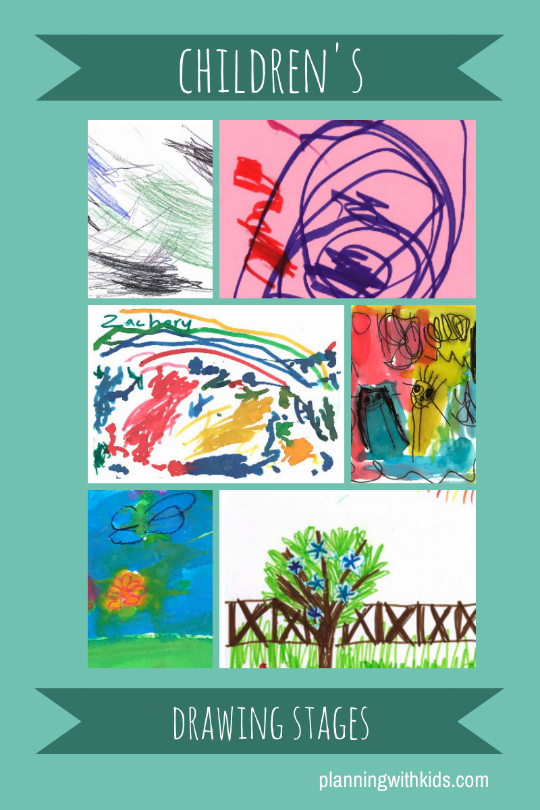
Kids produce some wonderful artwork over the years. This short guide will help you identify and enjoy the different stages your kids go through with their artwork as they get older. It will also help you work out which are the must-keep pieces. It's from Nathan and Sara Hodges, founders of Art Eater, which is all about kids' artwork – creating it, displaying it and preserving it. Visit Art Eater at http://www.arteater.com.au. EDIT Please note the Art Eater website is no longer working.
***
Taking a closer look at what your kids are creating. Every child is different. And of course, all kids develop at different speeds and in different ways. After all, it's not a competition – there's plenty of that to come later in life!
However, when it comes to their artwork there are some clear stages which nearly all kids pass through along the way. And for a parent it is lovely to be able to pick up on these stages as they are reached, whenever that is.
So, if you're interested, here they are!
First Stage
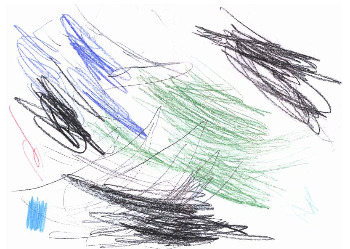
The first stage is simple scribbling. This is the typical output of a two or three-year old and – no surprises here – this is not really about the result on the page! Instead it's all about the enjoyment of the process. The more kids scribble, the more fun they have. And if they are using paint, then it's even more fun. It certainly has been in our house! All the while they are tuning their motor and pen skills, enjoying the process and effect of changing colours and paints, and generally having a ball. Keeping this stuff is as much a memory of the creative process as the creation itself. It's pure fun on a page!
Second Stage

The second stage to spot is the appearance of round shapes – it's a pleasing and natural mechanical action to create something round on a page, and often kids can spend many proud hours creating these shapes alongside their normal vigorous scribbling and painting.
Third Stage

It is around this time the third stage happens. Kids will often, all of a sudden sometimes, identify in the round or scribbled or painted shapes they are creating a resemblance to something they know. It might be a sun, a house, a rainbow (like this one), or just Mummy or Daddy. Anything really. They'll tell you what they've created. This will be the first time they have put onto paper something they know, and if you can capture this stage it's a wonderful thing to keep and look back on. Not to say, of course, that right after this they won't go straight back to having fun – they do. They're kids. But there is usually a pride and curiosity in having produced something recognisable on the page. Sooner or later they start to build on this.
Fourth Stage
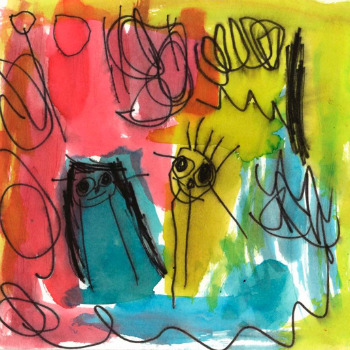
In the fourth stage, typically around the ages of four or five – faces and people appear. Hilariously for us as parents, pictures of people nearly always start without any body at all – so the arms and legs spring straight out of the head. I can't get enough of these pictures myself! It's almost a shame to me when the trunk starts to appear very soon afterwards.
Fifth Stage
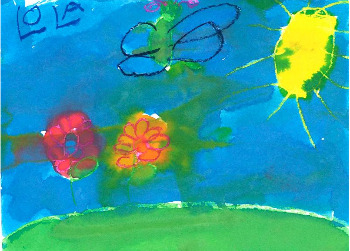
After that, stage five. At ages five, six and seven, pictures start to sit on a baseline and include houses, families, cars, bikes, holidays, flowers, trees – whatever is prominent in the child's mind at the time. The images are depicted 'as known' rather than 'as seen' – so there is no perspective or scale involved.
Sixth Stage
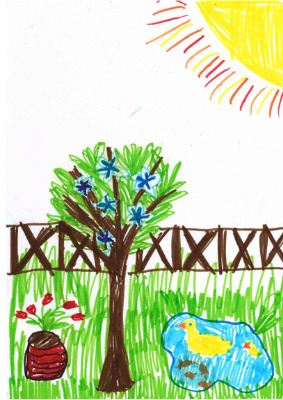
Perspective and scale – stage six – typically starts to appear at eight, nine and ten, and then all of a sudden drawing and painting can feel harder and less spontaneous as a consequence. Other things happen at this point too – an increase in a kid's ability to self-appraise, and an increase in the importance of fitting in with their peers and following the pack. And so, sadly, if there hasn't been much encouragement or appreciation of what they've created over the years, then this is often the point when lots of kids can decide they're not good enough at creating artwork and lose their confidence and enjoyment, at least for a while.
What should we, as parents, be doing through all this? Well, the answer kind of depends which researcher you believe the most. But certainly, enjoying everything our kids create is a great place to start. Encouraging and appreciating it all as well, obviously. And, maybe, trying not to define it or influence it too much along the way – after all, it's their work, not ours.
So there we are. Plenty more on this subject out there on the web if you're interested. And we always welcome any contributions from you guys on our Art Eater Facebook page. But in the meantime, look out for some of the milestones your kids pass on the way, and treasure them. They only happen once!
Do you want some free tools to help you organise the chaos of family life?
The Planning With Kids Newsletter is called NOW with Nicole Avery. It is an upbeat weekly newsletter that aims to help you organise the chaos of family life and find simple ways to enjoy it more.
My philosophy is to organise the known and repetitive tasks of family life so you create a solid foundation that allows you to manage the more unpredictable and challenging elements.
You can sign up for the free newsletter in the sign-up box below! To say thank you for signing up for the newsletter I have created a simple but super useful guide for you to help you organise the chaos of family life. The free download helps simplify some of the repetitive and time-consuming tasks that occur as part of daily family life. Guide ✼ Plan ✼ Check ✓ contains 10 separate printable tools that you will be able to use over and over again.

Sign up and organise the chaos of family life!
Children's Drawings Arms Coming From Head Meanings
Source: https://planningwithkids.com/2010/08/03/childrens-drawing-stages/
0 Response to "Children's Drawings Arms Coming From Head Meanings"
Post a Comment